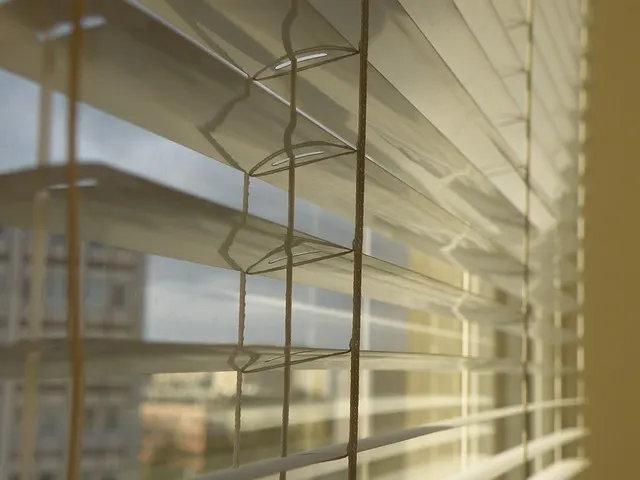
uPVC windows and doors are common in the UK & USA, and elsewhere across the world. They are often found in both commercial and residential properties due to the fact that the material, unplasticised polyvinyl chloride, has a low relative cost. It is also rated highly for its durability and versatility. The material is reasonably energy efficient and low maintenance, and so is used for front doors, windows, and garage doors in modern homes.
Why do uPVC doors sometimes look bad?
The appearance of uPVC doors and uPVC windows does change over time. The material is affected by the weather, like most construction materials, and as such will look different after a few years. Depending on the weather conditions where the property is depends on how well uPVC will fare – in places where the uPVC will be in direct sunlight, it will often fade in colour due to the harsh UV rays.
Sometimes, uPVC doors and uPVC windows will look bad due to bad paint jobs. The nature of uPVC as a material means that it requires specially formulated plastic paint. Failing to use this will result in peeling and flaking paint on the surface of the plastic. Often when painting their own door, people do not know this. Likewise, if a uPVC surface was painted many many years ago, i.e. upwards of ten, it may be that the door requires a new lick of paint.
Finally, according to Sketch Spray the most common cause of uPVC doors and uPVC windows being considered “ugly” is that they have been painted an outdated colour, like brown. Many modern homeowners repaint their front door, door frame and uPVC windows from brown to a much more modern colour such as anthracite grey.
How can you improve the appearance of a uPVC front door?
There are a few ways to improve the look of uPVC doors and uPVC windows. It depends on how much spare time and spare money you have available, as well as what it is that is causing you to dislike the door, but you could try:
New door accessories
Door handles, door knockers, and door numbers have a large part to play in the appearance of your front door. Luckily, all of these can be replaced relatively inexpensively! A new door knocker, handle or even number can completely transform the appearance of a door from drab and dull to exciting and unique. It will help to make any old door look much more contemporary.
Plants and foliage
For uPVC doors and uPVC windows, you can try adding potted plants to your uPVC in order to improve the appearance. Try a potted plant either side of your front door, perhaps, or hanging baskets outside each of your uPVC windows. It may be a temporary fix, but it can help to make your house feel more like a home.
Replace the uPVC doors and uPVC windows
This option certainly isn’t for everybody, and is quite costly. But, if you have the means, you can always just completely scrap the old uPVC and get yourself new doors and new windows to replace the old and dated uPVC window frames and doors..
Painting uPVC doors and windows
Finally, the most cost effective way to upgrade the overall look of uPVC doors and uPVC windows – and, in fact, a whole property – is to paint uPVC. It is a relatively simple and inexpensive procedure, especially compared to replacing the uPVC entirely, and can be done either by professionals or by yourself.
You can paint uPVC doors and uPVC windows either by spray painting them with specialist spray paint, or painting them by hand. The latter does take longer, and puts your uPVC doors at a higher risk of getting brush marks in their paint, but it is often significantly cheaper for those painting their own home, helping to keep the upgrade at a reasonable price.
uPVC paint comes in a range of colours, and most brands offer colour swatches for you to explore. You can take a look on places like Pinterest to see what the popular colours are, and potentially speak to a salesman to find out how to get yourself that same colour!
How to paint uPVC doors and uPVC windows
There are a few steps in painting uPVC doors, and before you let yourself loose on your front door with a paint brush, there are things you need to consider. First of all, are the weather conditions right? You need it to be between 10 and 30 degrees celsius, not too sunny, and dry. Otherwise, the paint will either not stick, dry too quickly, or not dry at all.
Once you’re sure you’ve picked the right day to paint your front door, follow these instructions:
1. Prepare
The first thing to do is to prepare both the uPVC windows and the area around them. Place a drop mat on the ground around the area you’re painting to protect your pavement first and foremost. When that is done, clean the uPVC window frame to remove all debris, grime and paint. A wet cloth and warm soapy water should remove dirt, and you may need to use some tools to remove the paint.
As soon as it is clean, fill any holes in the uPVC by using a filler or caulk. Leave the caulk to dry and then carefully sand the surface. Once lightly sanded, the surface is ready for paint. It is at this point that you should mask up the rest of your property. Cover the glass and brickwork with masking paper and tape to protect it.
Then, check the manufacturer’s instructions on your paint to see if you need to prime your surface. If so, apply your primer in single direction strokes to avoid brush strokes.
2. Paint
You can either spray on the paint or use a roller or paint brush to get your paint on. Spray painting will provide the most professional finish, but is often inaccessible for those DIYing the job. If you are using a roller or a brush, be careful to avoid brush strokes.
When spray painting (or manually painting), apply an even coat onto the uPVC door, and then leave it to dry. Once dry, return for the second coat, and continue as such until you reach the desired colour. It will likely take a few coats to get your uPVC to the colour you want.
- Sagittarius Man & Gemini Woman Love and Sex Compatibility - January 31, 2024
- Taurus Ascendant Rising Personality Traits in Men (Guide) - January 31, 2024
- How to Seduce and Attract a Sagittarius Man (Seduction Tips) - January 31, 2024
